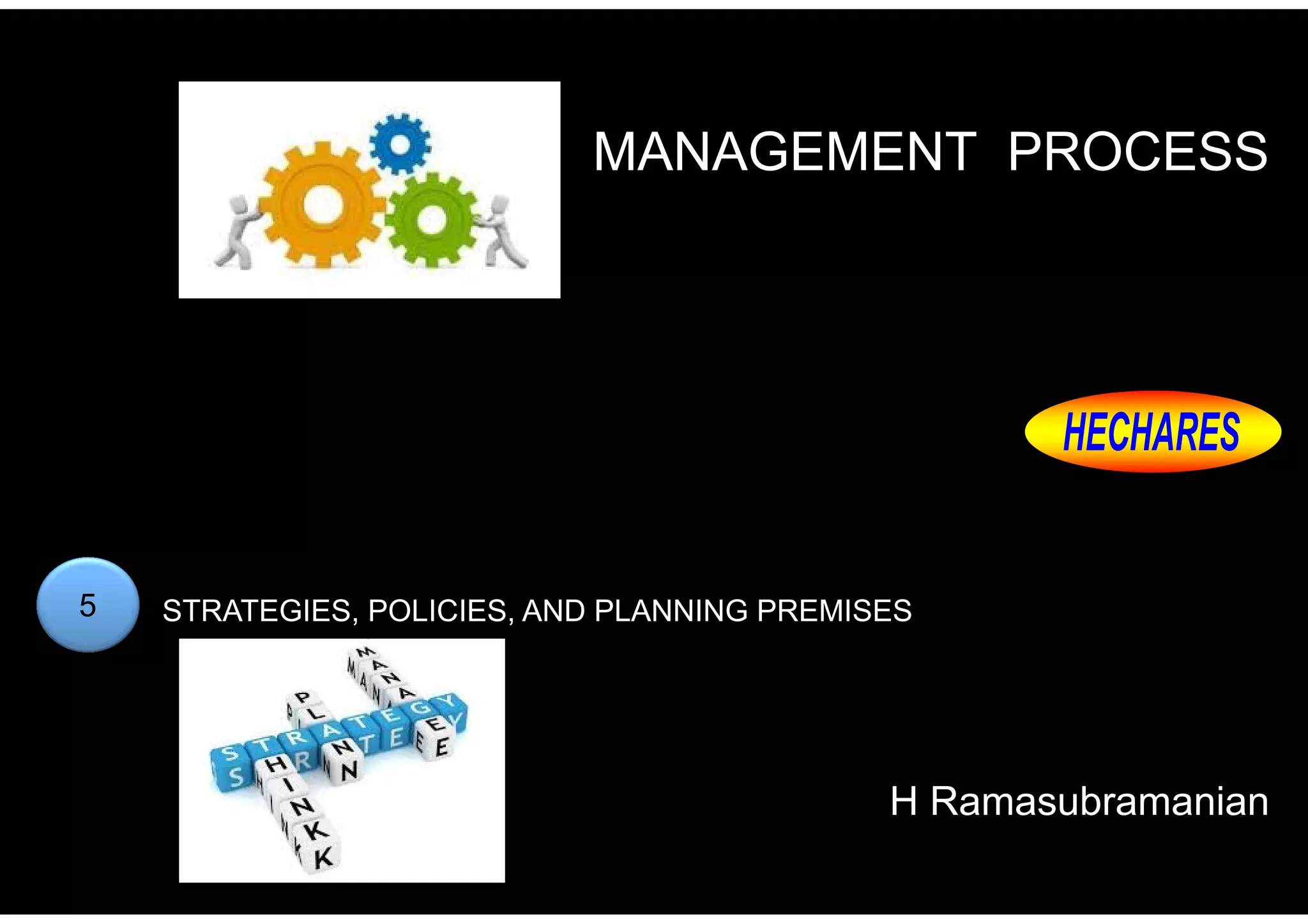The document discusses different levels of strategic management including corporate, business unit, functional, and single business unit levels. It also discusses strategic planning processes such as defining vision, mission, values, and developing strategies. Additionally, it covers the BCG matrix for classifying business units based on market growth and relative market share into stars, question marks, cash cows, and dogs. Finally, the key components of strategic planning like vision, mission, values, and strategies are defined.





















